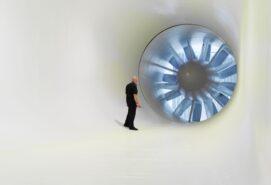Wind tunnel correlation
Wind tunnel correlation is a crucial aspect of Formula 1 car development, and it refers to the process of validating the results obtained from wind tunnel testing in order to ensure that they accurately reflect the car's performance on the track. In essence, it is the process of making sure that the data obtained from wind tunnel testing is consistent with the real-world conditions that the car will encounter during a race.
In order to achieve the best possible performance from a Formula 1 car, teams spend countless hours testing their designs in wind tunnels. These highly sophisticated facilities use powerful fans to generate airflows around a scale model of the car, allowing engineers to study its aerodynamic characteristics in great detail. The data obtained from these tests is then used to fine-tune the car's design, with the goal of maximizing its speed and handling.
However, wind tunnel testing is only one part of the equation when it comes to designing a successful Formula 1 car. The real test of a car's performance comes on the track, where it must navigate a variety of conditions, including changes in altitude, temperature, and humidity, as well as wind gusts, turbulence, and other factors.
To ensure that the data obtained from wind tunnel testing accurately reflects the car's performance on the track, teams use a process known as wind tunnel correlation. This involves comparing the results obtained from wind tunnel testing with real-world data gathered during track testing, and making any necessary adjustments to the car's design to ensure that it performs optimally in all conditions.
In practice, wind tunnel correlation involves a variety of techniques, including computer simulations, wind tunnel testing with moving ground planes, and on-track testing using instrumented cars. By using these techniques, teams can validate the results obtained from wind tunnel testing, and ensure that their cars are optimized for peak performance on race day.
In conclusion, wind tunnel correlation is an essential aspect of Formula 1 car development, and it plays a critical role in ensuring that teams can extract the maximum possible performance from their cars. By carefully validating the results obtained from wind tunnel testing, teams can design cars that are optimized for a wide range of conditions, and give themselves the best possible chance of success on race day.












LAST 3 F1 Fan COMMENTS